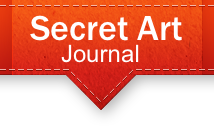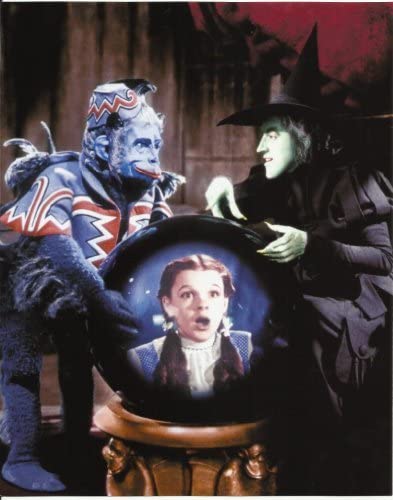

The Meta-Magic of L. Frank Baum’s The Wizard of Oz by D. Michael Smith
“Like all great stories, The Wizard of Oz provides a template that allows us to open ourselves to the hidden capacities we had forgotten we had; the creative potentials we didn’t know how to use; and the deeper knowing . . . that is within every one of us. We are so much more than we thought we were.” (The Wizard of Us, Jean Houston, 2012, p. 12)
When I was five years old, I saw the movie, The Wizard of Oz. I was terrified of the Wicked Witch and her Flying Monkeys. As I got older, my fears eased, and the movie eventually became one of my favorites. Still later, I studied the book by L. Frank Baum (1856-1919) and became intrigued with the symbolic meanings of the various characters in the story. If you haven’t ever seen the movie, please stop now, and see it online, DVD, or on TCM. Or better yet, read the book. I recommend The Annotated Wizard of Oz by Baum, with Notes by Michael Hearn, and Preface by Martin Gardner (2000). This story, what Joseph Campbell calls a “Hero’s Journey,” has become an American cultural myth that allows us, the audience, to enter into a magical reality.
I believe The Wizard of Oz is an example of what Robert Neale calls “metamagic.” In An Essay on Magic Neale says “such metamagic can reflect on the magic that occurs in human relationships, politics and government, the arts, education, economics, even science, and especially medicine. It can also relate to the puzzles, illusions, deceptions, and ‘mysteries’ of the meaning of life as illustrated by traditional religions and contemporary approaches to ultimate concerns. . . . So metamagic is that most obvious form of backstage magic that openly and directly engages the audience in a reminder and education on magic in daily life.” (Essay, p. 92)
All cultures have their favorite myths and fairy tales. The English have Alice in Wonderland; the Italians have Pinocchio; the Danish have the stories of Han Christian Anderson; the English have Peter Pan, and the Germans have the very popular stories of the Brothers Grimm. Magic is a big part of all these stories. Alissa Burger, in her book, The Wizard of Oz as American Myth (2012) says that “The Wizard of Oz is a quintessentially American story . . . widely recognized as the first uniquely American fairy tale. . .” Her book then explores six significant incarnations of the Oz story:
*L. Frank Baum’s original book, The Wonderful Wizard of Oz (1900)
*The MGM classic film The Wizard of Oz (1939)
*Sidney Lumet’s African American film musical The Wiz (1978)
*Gregory Maguire’s novel Wicked: The Life and Times of the Wicked Witch of the West (1995)
*Stephen Schwartz and Winnie Holzman’s hit Broadway show Wicked: A New Musical (2003)
* The SyFy Channel original miniseries Tin Man (2007)
Other recent artistic expressions of the Oz story can be found in The Muppet’s Wizard of Oz (2002) and the movie Oz the Great and Powerful (2013). Another book on Oz is The Wizard of Oz and Who He Was by Martin Gardner and Russel B. Nye, editors (1957, 1994). The 2021 PBS television’s show “American Experience” show, American Oz focuses on the life of L. Frank Baum.
So, why do all these literary, film, and theatrical artists continue to return to and find inspiration in this American myth? I believe that the Oz stories have what Bob Neale means by metamagic – universal life themes such as good and evil, the search for a true identity, life as a journey, wisdom, courage, and love as well as recognizable characters. It also has room for various interpretations and provides many opportunities to use “magical” artifices and technologies.
Before I retired as a psychotherapist I sometimes used the characters from The Wizard of Oz as metaphors for some of the personal and relational problems that clients brought to therapy. Scarecrow went to Oz in search of a brain. Some clients needed to focus on their faulty thinking, especially about themselves, others, and the world. This is called Cognitive Therapy. Some clients, like Tin Man, needed to be more aware of their feelings, their heart. This is called Affective Therapy. Some clients came to find courage, like the Cowardly Lion, to behave in brave and healthy ways. This is called Behavioral Therapy. Like Dorothy, some clients came wanting to go home, to find safe, less conflicted, and more loving relationships. This is called Relational or Family Systems Therapy. The four main characters discovered that by working together each could achieve their own goals. This is called Group Therapy. Many came into therapy seeking a Great and Powerful Wizard, a therapist to magically “fix” them. My job, as a therapist was to help them all discover those creative hidden potentials within themselves. In the end, and if they completed their work, I hoped that they would discover that “I’m really a very good man, though I’m a very bad Wizard.” The real wizard was found within themselves, “the wizard of us.”
I have created a stand-up magic show for a “thinking” audience that is called “The Wizard of Us: Our Magical Lives.” In the introduction to the show I say, “I am a magician. You are a magician. Like the characters in the classic book and movie The Wizard of Oz we can discover and actualize the real magic that is in us all. If we work together, like Dorothy, Scarecrow, Tin Man, and the Cowardly Lion, we can create greater magic. As a magician, it is my task to remind us that we live in a universe where surprises and deep mysteries are just around the next corner. But I must warn you. Like the Wizard of Oz I am a trickster. Because I’m telling you that I am a trickster that makes me an honest trickster. So remember the words of the artist Picasso, ‘All art is a lie that helps us tell the truth.’ So as I playfully and hopefully deceive you today I am also telling you the truth.”
The various Oz stories can inform our performances as magicians. For example what can we learn from these five main characters? How can we discover and develop our creative potentials– the deeper knowing that is within every one of us? Are we always looking for that wizard, that one trick, DVD, book, lecture or convention that will magically make us a better magician? Maybe we already have what we need. Can we bring the color of Oz to the drabness of our “Kansas” magic? Do we need to rethink our magic presentations, our character, and our interactions with the audience? Do we need to express our emotions more in our presentations? What feelings do we now stir up in our audience members? What is the range of emotions that we want our audiences to experience? Do we have courage as we perform? What are our Flying Monkeys? Do we need to take more risks in our presentations? How do we act when a trick goes wrong? Do we blame the audience if we don’t get the response we want? Are we so focused on our props and techniques that we fail to establish a relationship with the audience? How do we treat our volunteers? Do they feel safe as they assist us or are they afraid that we will make a fool of them? Do we allow our audiences to experience our humanity? Are we afraid of being vulnerable? Do we risk working with a director or safe group of magicians to improve our magic? We may be like the gate keeper to the Emerald City who says to the four pilgrims who requested an audience with the Wizard, “Nobody gets in to see the wizard! Not nobody! Not no how!”
Eugene Burger says it best, “Magic is about life not the props. Great magic is also about the magician.” Robert Neale’s concept of metamagic allows the stage magician and other artists to broaden and deepen their work to where the “rich spirit of humanity is enjoyed—a spiritual stage” (Essay, p. 94).






